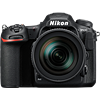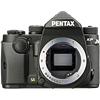Main
Model
Price
Advantages
launch
Announced
Body type
Camera subcategory
Sensor
Effective pixels
Max resolution
Sensor size
Sensor type
Processor
Image ratio w:h
Other resolutions
Sensor photo detectors
Image
ISO
Boosted ISO (minimum)
Boosted ISO (maximum)
White balance presets
Custom white balance
Image stabilization
Uncompressed format
JPEG quality levels
Image stabilization notes
Photography features
Minimum shutter speed
Maximum shutter speed
Aperture priority
Shutter priority
Manual exposure mode
Subject / scene modes
Built-in flash
External flash
Flash modes
Continuous drive
Self-timer
Metering modes
Exposure compensation
AE Bracketing
WB Bracketing
Maximum shutter speed (electronic)
Flash range
Screen / viewfinder
Articulated LCD
Screen size
Screen dots
Touch screen
Screen type
Live view
Viewfinder type
Viewfinder coverage
Viewfinder magnification
Videography features
Resolutions
File Format
Microphone
Speaker
Optics & Focus
Autofocus
Digital zoom
Manual focus
Number of focus points
Lens mount
Focal length multiplier
Physical
Weight (inc. batteries)
Dimensions
Environmentally sealed
Battery
Battery details
Battery Life (CIPA)
Storage
Storage types
Storage included
Connectivity
USB
HDMI
Microphone port
Headphone port
Wireless
Wireless notes
Remote control
Other features
Orientation sensor
Timelapse recording
GPS
GPS notes
Samples
Videos
Summary
The KP highest resolution of 6016 x 4000 pixels (24 megapixels) is better than the Nikon D500 highest resolution of 5568 x 3712 pixels (21 megapixels). The KP has a wider ISO range of 100-819200 in compare with 100-51200 ISO range of the Nikon D500. This ISO range let you to capture good quality pictures in low light situations. The KP provides image stabilization which will help you to capture clearer photos when using telephoto lenses. The Nikon D500 has more number of focus points in compare with the KP: 153 vs 27. More focus points means less risk of losing focus lock while tracking a moving subject.
The Nikon D500 screen is better as it has more number of screen dots 2,359,000 in comparison to 921,000 dots of the KP screen. The higher dot count screen is better for reviewing photos on your camera. The D500 provides better fastest shutter speed - 1/8000 second.
The KP is produced with built-in flash. The Nikon D500 battery life is better in compare to the KP battery life. In accordance with CIPA standards you will be able to capture 1240 shots with the D500 and only 390 with the KP. The KP weighs 703g which is 157g less than the weight of the D500.
The KP has 7 advantages and the Nikon D500 only 6 so the KP will become the best choice. Get the list of the best offers on Amazon.


